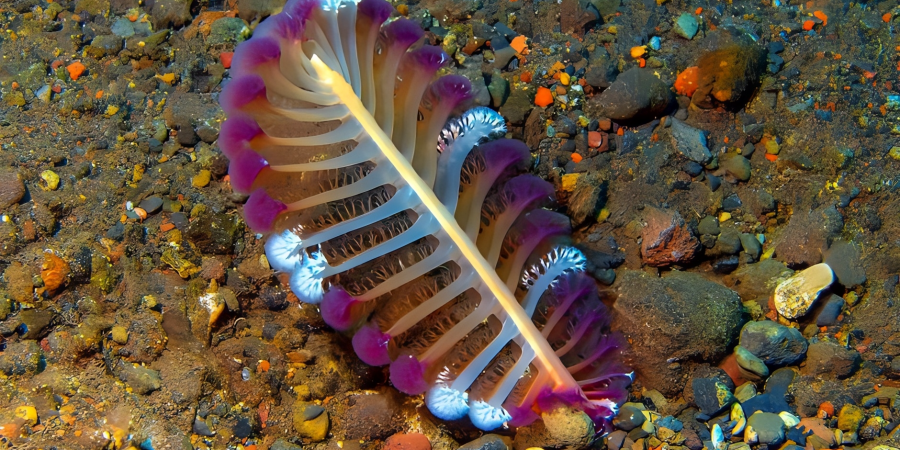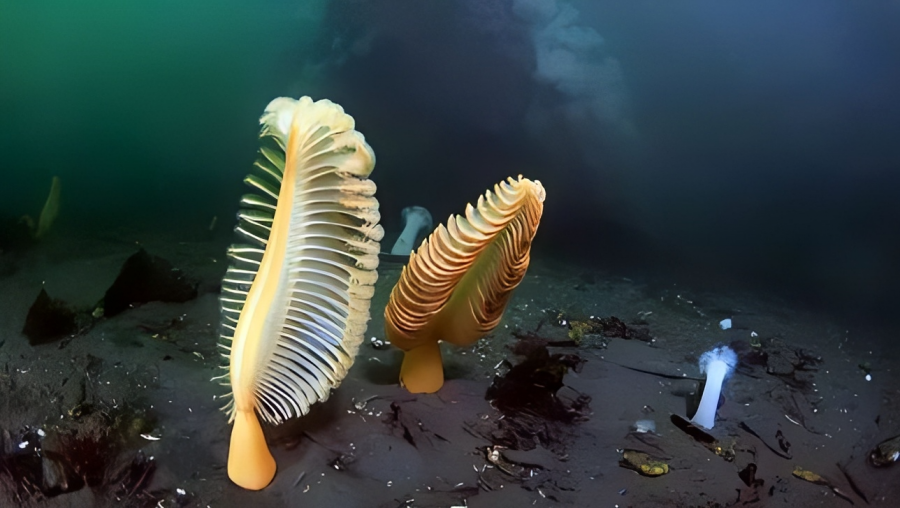

Hii everyone…🤩This is my first blog of candlemonk. I start this because I share my knowledge to you via my blogs. Hope all of you support me. And in this blog we know about Sea Pen.

Conrad Gesner's 1555 publication, "De lunariis," has the earliest known account of bioluminescence in sea pens.
The marine cnidarians in the Pennatulacea order are known as sea pens. They are colony residents. They got their name because they looked like feathers. They are members of the Pennatula genus.

A sea pen is a group of several microscopic creatures called polyps rather than a single mammal. Each colony has a variety of polyp kinds that each play a particular role in ensuring the colony's existence. To capture drifting plankton, the feeding polyps, also known as autozooids, wave their tentacles in the water column.
From arctic oceans to the tropics, they can be found in both shallow and deep waters.

The sea pens get their common name from their feather-like appearance; they resemble traditional quill pens. However, the majority of species lack polyp leaves and instead resemble clubs, umbrellas, or pinwheels.
The order contains 35 living genera and 14 families, with an estimated 200 legitimate species out of the 450 documented ones. Sea pens have a global distribution and can be found in both tropical and temperate environments, as well as at depths ranging from the intertidal to more than 6100 m.
Without having to remove your boat out of the water, SeaPen is a novel dry-docking solution that keeps it free of barnacles and other marine flora.
Sea pens are filter feeders. They use their unique feeding polyps, known as autozooids, which have 8 tentacles, to capture plankton and other food-related items from the surrounding water.

The orange sea pen is remarkably mobile; when it wants to move, it fills its siphonozooids with water and floats like a leaf in the breeze. When predators approach, it may also contract, partially withdrawing into its fleshy base.
Planula, which are non-feeding, free-swimming, and typically settle shortly, are the product of fertilized ova. The planula larva eventually settle and develop into a polyp, with the base becoming a stem. From this structure, the secondary polyps expand laterally. The juveniles grow quickly and can go for weeks without food.
I hope you like this blog🤩. Follow my account to know more such information✌️. If you like this blog, like and comment.
Thank you..,






